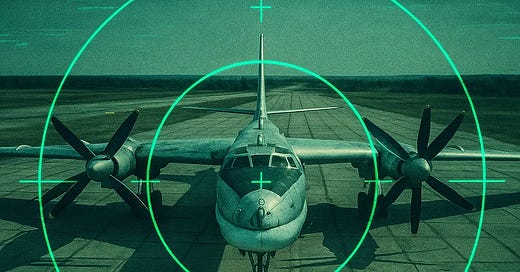Operation Spiderweb: The Future isn't FPV--it's autonomous, distributed, and lethal
Ukraine's strikes reveal what multi-agent, disaggregated warfare really looks like
Good morning,
This weekend, Ukraine launched Operation Spiderweb, a large scale drone attack 18 months in planning and preparation. Over the past year and a half, Ukraine smuggled more than 100 small, first-person view (FPV) drones into Russia. The attackers stored the drones in containers, loaded the containers onto trucks, and then drove the trucks to locations near various Russian airbases.
The drones struck four airbases as far away from Ukraine as 2,500 miles. An attack on a fifth airbase even further away failed. Despite that setback at the Ukrainka Air Base in Amur Oblast, the strikes are seen as having been successful. President Volodymyr Zelensky has claimed that the attacks damaged no fewer than 41 Russian planes, representing ~$7B in damages. Zelensky also claimed those planes represented around 1/3rd of Russia’s strategic cruise missile launch capability.
More importantly, the attack is a major information warfar…
Keep reading with a 7-day free trial
Subscribe to Building Our Future to keep reading this post and get 7 days of free access to the full post archives.



